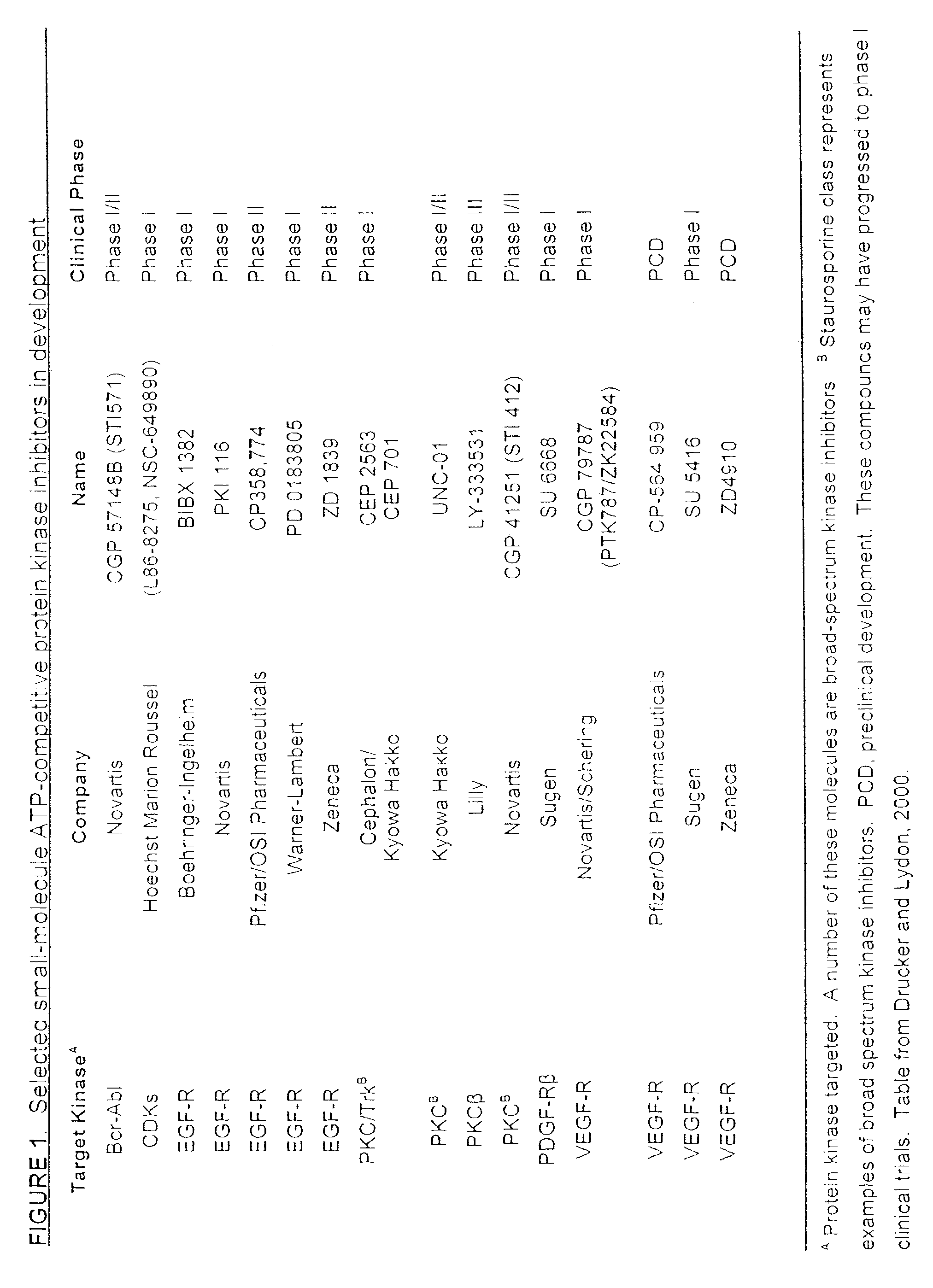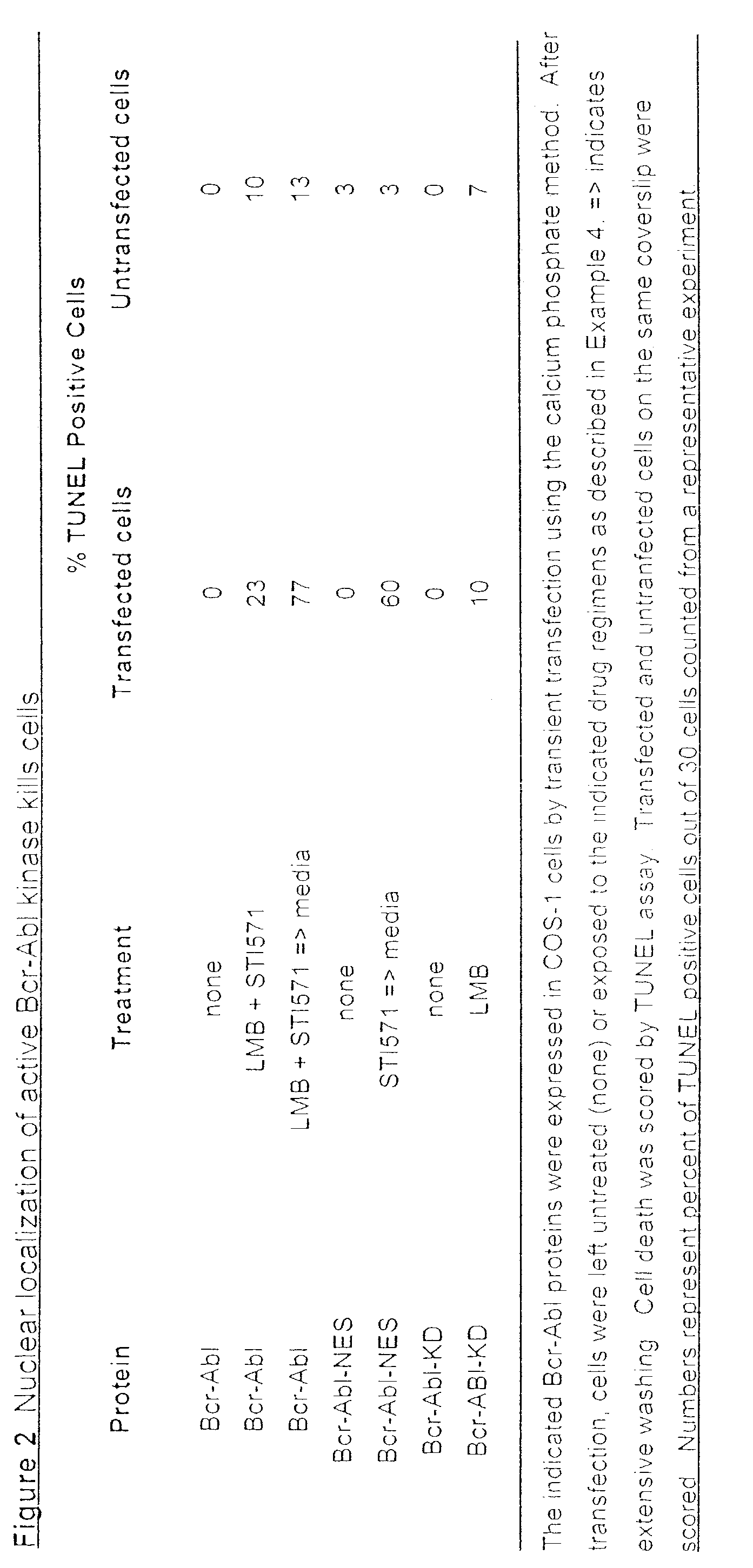Strategy for leukemia therapy
- Summary
- Abstract
- Description
- Claims
- Application Information
AI Technical Summary
Benefits of technology
Problems solved by technology
Method used
Image
Examples
example 1
[0040]Transfection and Immunoblotting. Transfection experiments were performed using the calcium phosphate method. Immunoblots were performed using 1 μg / ml 4G10 monoclonal antibody against phosphotyrosine (Upstate Biotechnology, Waltham, Mass.), or 1 μg / ml monoclonal antibody against Abl (8E9) (Pharmingen, San Diego, Calif.). All immunoblots were revealed by enhanced chemiluminescence (Amersham, Little Chalfont, UK).
example 2
[0041]Plasmids. The murine Abl-NES and p190 Bcr-Abl-KD have been described (Cortez et al., 1995; McWhirter and Wang, 1993; and Taagpera, et al., 1998). The BcrAbl-NES was engineered by joining the first 1527 base pairs of human Bcr with the last 3117 base pairs of murine Abl-NES.
example 3
[0042]Immunofluorescence. Abl− / − fibroblasts were seeded onto cover slips, transfected with the specified expression plasmids and fixed for immunofluorescence 48 h after transfection. The non-adherent TonB210 and K562 cells were seeded onto poly-L-lysine (Sigma) coated cover slips for 3 h and then processed for immunofluorescence. Cells were permeabilized for 10 min with 0.3% Triton X-100 (Sigma), then blocked at room temperature (RT) for 45 to 60 min with 10% normal goat serum (Gibco, Rockville, Md.), and incubated at RT with anti-Abl 8E9 (30 μg / mL) for 60 to 90 min. Cover slips were incubated at RT for 45 to 60 min with Alexa Fluor 594 goat secondary antibody against mouse (Molecular Probes, Eugene, Oreg.) and with Phalloidin-conjugated Alexa Fluor 488 (Molecular Probes) to stain for F-Actin. After DNA staining with Hoechst 33258 (Sigma), cover slips were mounted onto glass slides with gel mount (Biomeda, Foster City, Calif.). Epifluorescence microscopy was performed with a Nikon ...
PUM
 Login to View More
Login to View More Abstract
Description
Claims
Application Information
 Login to View More
Login to View More - R&D
- Intellectual Property
- Life Sciences
- Materials
- Tech Scout
- Unparalleled Data Quality
- Higher Quality Content
- 60% Fewer Hallucinations
Browse by: Latest US Patents, China's latest patents, Technical Efficacy Thesaurus, Application Domain, Technology Topic, Popular Technical Reports.
© 2025 PatSnap. All rights reserved.Legal|Privacy policy|Modern Slavery Act Transparency Statement|Sitemap|About US| Contact US: help@patsnap.com



